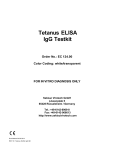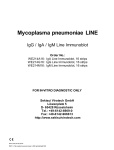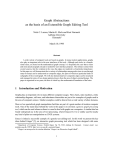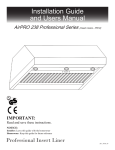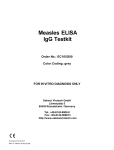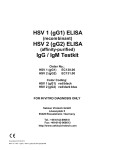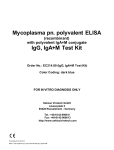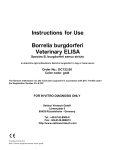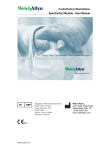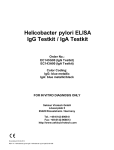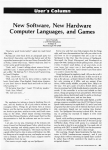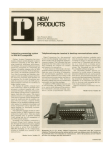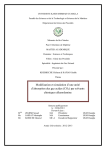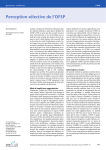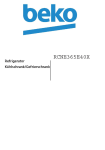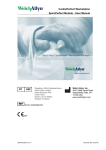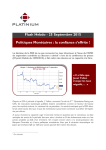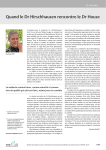Download Package Insert - Sekisui Diagnostics
Transcript
Diphtheria ELISA IgG Testkit Order No.: EC129.00 Color Coding: white FOR IN VITRO DIAGNOSIS ONLY Sekisui Virotech GmbH Löwenplatz 5 65428 Rüsselsheim / Germany Tel.: +49-6142-6909-0 Fax: +49-6142-966613 http://www.sekisuivirotech.com Druckdatum 03.02.2014 REV 17 / Diphtherie ELISA IgG GB Contents 1. Intended Use ......................................................................................................................... 3 2. Diagnostic Relevance ............................................................................................................ 3 3. Test Principle......................................................................................................................... 3 4. Package Contents (IgG Te stkit) ............................................................................................. 3 5. Storage and Shelflife of the Testkit and the ready to use reagents ....................................... 3 6. Precautions and Warnings .................................................................................................... 4 7. Material required but not supplied......................................................................................... 4 8. Test Procedure ...................................................................................................................... 4 8.1 8.2 8.3 8.4 9. Examination Material....................................................................................................................................................... 4 Preparation of Reagents ................................................................................................................................................. 5 Virotech ELISA Test Procedure....................................................................................................................................... 5 Usage of ELISA processors ............................................................................................................................................ 5 Test Evaluation ...................................................................................................................... 5 9.1 9.2 9.3 9.4 Test function control........................................................................................................................................................ 5 Evaluation ....................................................................................................................................................................... 6 Interpretation ................................................................................................................................................................... 6 Limits of the Test............................................................................................................................................................. 7 10. IgG test evaluation with the 4-parameter method .................................................................. 7 10.1 Test function control........................................................................................................................................................ 7 10.2 Conversion of the quantitative results to international units per milliliter (IU/mL) ............................................................. 7 11. Performance Data .................................................................................................................. 8 11.1 11.2 11.3 11.4 11.5 11.6 11.7 Sensitivity and Specif icity ................................................................................................................................................ 8 Recovery rate.................................................................................................................................................................. 8 Prevalence (Expected Values) ........................................................................................................................................ 8 Intra-assay-Coefficient of Variation (Repeatability).......................................................................................................... 8 Inter-assay-Coefficient of Variation (Reproducibility)....................................................................................................... 8 Proficiency....................................................................................................................................................................... 8 Detection Limit ................................................................................................................................................................ 8 12. Literature ............................................................................................................................... 8 13. Test Procedure Scheme ...................................................................................................... 10 Seite 2 v on 10 Diphtherie ELISA IgG GB REV 17 Druckdatum 03.02.2014 1. Intended Use The Diphtheria ELISA is intended for the quantitative detection of IgG antibodies against the Diphtheria toxin to follow -up the success of vaccinations and to determine the immunisation status. 2. Diagnostic Relevance Diphtheria is caused by Corynebacterium (C.) diphtheriae, an aerobic, non-sporulating rod bacterium. The virulence of C. diphtheriae derives from the diphtheria toxin. Humans are the only reservoir for the bacterium. It is transmitted by droplet infection. Within a few days, there is a general feeling of illness w ith fever, headache, abdominal pain and pains in the limbs. The infectious disease occurs worldwide but has been greatly pushed back by active immunisation. There are locally limited outbreaks again and again because of gaps in immunisation and it is associated w ith high mortality. In Germany only one clinical case of diphtheria w as recorded in 1998 and again in 1999 and there w as no case recorded in 2000 (1,4). Active immunisation is the method of choice for the prevention of diphtheria. The immunity produced by the antitoxin largely prevents the illness but not the infection so that there can also be carriers among those w ho have been vaccinated (1). Diphtheria immunisation in infants and preschool children is as good as that against tetanus in Central Europe. Ac cording to investigations by the RKI [Robert Koch Institute], approx. 95% of all children are vaccinated regularly against diphtheria (4 ). How ever, the recommended boosters are often no longer given so that deficits in vaccine immunity occur in adolescents and younger adults (1, 3, 4). It is estimated that about half of them are not vaccinated as recommended for their age (4). In Germany at present, only about one third of adults have reliably protective antibodies (1, 4, 6). Similar figures are also found for other parts of Europe and the USA (5, 7). The neutralisation test is the method of choice for detecting specific antibodies to the toxin. How ever this is very expensiv e and time-consuming. By means of this ELISA, the IgG antibody level can be measured so that conclusions can be draw n about the vaccination status. Furthermore, it can be used to examine the need for vaccination and to check immunity after vaccination has taken place. 3. Test Principle The antibody searched for in the human serum forms an immune complex w ith the antigen coated on the microtiter-plate. Unbound immunoglobulins are removed by w ashing processes. The enzyme conjugate attaches to this complex. Unbound conjugate is again removed by w ashing processes. After adding the substrate solution (TMB), a blue dye is produced by the bound enzyme (peroxidase). The color changes to yellow w hen the stopping solution is added. 4. Package Contents (IgG Testkit) 1. 2. 3. 4. 5. 6. 7. 8. 9. 5. 1 Microtiter-Plate consisting of 96 with antigen coated, breakable single w ells, lyophilised PBS-Dilution Buffer (blue, ready to use) 2x50m l, pH 7,2, w ith preservative and Tw een 20 PBS-Washing Solution (20x concentrated) 50m l, pH 7,2, w ith preservative and Tw een 20 IgG-Ab-standard sera for drawing a standard curve, 6 vials à 2ml, ready to use, human serum w ith preservative, 0,001IU/ml, 0,002IU/ml, 0,005IU/ml, 0,01IU/ml, 0,02IU/ml, 0,05IU/ml (IU=international units) IgG high positive Control, 2 m l, human serum w ith preservative, ready to use IgG low positive Control, 2 m l, human serum w ith preservative, ready to use IgG-Conjugate (anti-human), 11ml, (sheep or goat)-horseradish-peroxidase-conjugate with protein-stabilizer and preservative in Tris-Buffer, ready to use Tetramethylbenzidine substrate solution (3,3’,5,5’-TMB), 11m l, ready to use Citrate-Stopping Solution, 6m l, contains an acid mixture Storage and Shelflife of the Testkit and the ready to use reagents Store the testkit at 2-8°C. The shelf life of all components is show n on each respective label; for the kit shelf life please see Quality Control Certificate. 1. Microtiter strips/single w ells are to be resealed in package after taking out single w ells and stored w ith desiccant at 2-8°C. Reagents should immediately be returned to storage at 2-8°C after usage. Seite 3 v on 10 Diphtherie ELISA IgG GB REV 17 Druckdatum 03.02.2014 2. 3. The ready to use conjugate and the TMB-substrate solution are sensitive to light and have to be stored in dark. Should there be a color reaction of the substrate dilution due to incidence of light, it is not useable anymore. Take out only the amount of ready to use conjugate or TMB needed for the test insertion. Additional conjugate or TMB taken out may not be returned but must be dismissed. Material Controls Status Diluted Undiluted After Opening Microtitreplate After Opening Rheumatoid factor Absorbent Conjugate Tetramethylbenzidine Stop Solution Undiluted, After Opening Diluted After Opening After Opening After Opening After Opening Final Dilution (ready-to-use) Test Samples Washing Solution 6. Shelflife max. 6h 1 w eek 3 months 3 months 3 months 1 w eek 3 months 3 months 3 months 3 months 4 w eeks Precautions and Warnings 1. 2. 3. 7. Only sera w hich have been tested and found to be negative for HIV -1 antibodies, HIV-2 antibodies, HCV antibodies and Hepatitis-B surface-antigen are used as control sera and standards. Nevertheless, samples, diluted samples, standards , controls, conjugates and microtiter strips should be treated as potentially infectious material. Please handle products in accordance with laboratory directions. Those components that contain preservatives, the Citrate Stopping Solution and the TMB have an irritating effect to skin, eyes and mucous. If body parts are contacted, immediately w ash them under flow ing water and possibly consult a doctor. The disposal of the used materials has to be done according to the country -specific guidelines. Material required but not supplied 1. 2. 3. 4. 5. 6. 7. 8. 9. 10. 8. Storage +2 to +8°C +2 to +8°C +2 to +8°C +2 to +8° (storage in the provided bag w ith desiccant bag) +2 to +8°C +2 to +8°C +2 to +8°C (protect from light) +2 to +8°C (protect from light) +2 to +8°C +2 to +8°C +2 to +25°C Aqua dest./demin. Eight-channel pipette 50µl, 100µl Micropipettes: 10µl, 100µl, 1000µl Test tubes Paper tow els or absorbent paper Cover for ELISA-plates Disposal box for infectious material ELISA handw asher or automated EIA plate w ashing device ELISA plate spectrophotometer, w avelength = 450nm, reference length = 620nm (Reference Wavelength 620-690nm) Incubator Test Procedure Working exactly referring to the Sekisui Virotech user manual is the prerequisite for obtaining correct results. 8.1 Examination Material Either serum or plasma can be used as test material, even if only serum is mentioned in the instructions. Any type of anticoagulant can be used for plasma. Alw ays prepare patient-dilution freshly. For a longer storage the sera must be frozen. Repeated defrosting should be avoided. 1. Only fresh non-inactivated sera should be used. 2. Hyperlipaemic, haemolytic, microbially contaminated and turbid sera should not to be used (false positive/negative results). Seite 4 v on 10 Diphtherie ELISA IgG GB REV 17 Druckdatum 03.02.2014 8.2 Preparation of Reagents The Sekisui Virotech System Diagnostica offers a high degree of flexibility regarding the possibility to use the dilution buffer, w ashing solution, TMB, citrate stopping solution as w ell as the conjugate for all parameters and for all different lots. The standard sera, high positive control and low positive control are only intended for this testkit. Do not use in other lots. 1. 2. 3. 4. Set incubator to 37°C and check proper temperature setting before start of incubation. Bring all reagents to room temperature before opening package of microtiter strips. Shake all liquid components w ell before use. Make up the w ashing solution concentrate to 1 L w ith distilled or demineralised w ater. If crystals have formed in the concentrate, please bring the concentrate to room temperature before use and shake w ell before use. 8.3 Virotech ELISA Test Procedure 1. 2. 3. 4. 5. 6. 7. 8. 9. 10. For each test run, pipette 100µl each of ready to use dilution buffer (blank), standard- and control sera as w ell as diluted patient sera. We propose a double insertion (blank, standards, controls and patient sera). Working dilution of patient sera: 1+100; e.g. 10µl serum + 1ml dilution buffer. After pipetting start incubation for 30 min. at 37°C (w ith cover). End incubation period by w ashing microtiter strips 4 times w ith 350 – 400µl w ashing solution per w ell. Do not leave any w ashing solution in the w ells. Remove residues on a cellulose pad. Pipette 100µl of ready to use conjugate into each w ell. Incubation of conjugate: 30 min. at 37°C (w ith cover). Stop conjugate incubation by w ashing 4 times (pls. refer to point 3 above). Pipette 100µl of ready to use TMB into each w ell. Incubation of substrate solution: 30 min. at 37°C (w ith cover, keep in dark). Stopping of substrate reaction: pipette 50µl of citrate stopping solution into each w ell. Shake plate carefully and thoroughly until liquid is completely mixed and a homogeneous yellow color is visible. Measure extinction (OD) at 450/620nm (Reference Wavelength 620-690nm). Set your photometer in such a w ay that the blank value is deducted from all other extinctions. Extinctions should be measured w ithin 1 hour after adding the stopping solution! Pls. refer to last page for Test Procedure Scheme 8.4 Usage of ELISA processors All Sekisui Virotech ELISAs can be used on ELISA processors. The us er is bound to proceed a validation of the devices (processors) on a regular basis. Sekisui Virotech recommends the follow ing procedure: 1. Sekisui Virotech recommends to proceed the validation of device referring to the instructions of the device manufacturer during the implementation of the ELISA processor respectively after bigger reparations. 2. It is recommended to check the ELISA-processor w ith the Validationkit (EC250.00) afterw ards. A regular check using the Validationkit shall be proceeded minimum once a quarter to test the accuracy of the processor. 3. The release criteria of the Quality Control Certificate of the product must be fulfilled for each testrun. With this procedure, your ELISA processor w ill function properly and this w ill support quality assurance in your laboratory. 9. Test Evaluation 9.1 Test function control a) OD-values The OD-value of the blank should be < 0.15. The OD-values of the low est standard (0,001 IU/ml) shall be >0,05 OD and the OD-values of the highest standard (0,050 IU/ml) shall be < 2,800 OD. b) The concentration of the low and high positive control have to be w ithin the ranges (IU/ml) stated in the Quality Control Certificate. Seite 5 v on 10 Diphtherie ELISA IgG GB REV 17 Druckdatum 03.02.2014 9.2 Evaluation By using the standards, a standard curve is plotted on the semilogarithm paper included in the kit in order to determine the Diphtheria-antitoxin-IgG-antibody level in the serum. The mean values of the extinctions are plotted on the ordinate and the concentrations (lU/ml of the ready to use standards) of the standard sera on the abscissa. You have to be aw are that the patient sera intended for the test procedure have been diluted 1:100. This is w hy the result read from the diagram must be multiplied by the factor of 100. For preparing the standard curve, either a point-to-point procedure as w ell as a 4-paramtercalculation can be used. Please note: Samples found to have a concentration of under 0.1IU/ml can be retested w ith a 1:10 dilution. The difference in the dilution must be considered in the evaluation. Samples w ith an extinction above the value of the 0,05IU/ml standard have to be used in a higher dilution in the test, e.g. 1:200, 1:400 etc. At OD values above 2.00, the measuring precision decreases with increasing optical density. It is therefore recommended that sera w hich attain OD values above 2.00 at a dilution of 1:100 be used in higher dilution, e.g. 1:200, 1:400 etc., in the test. These dilutions have to be considered during the test evaluation. Example of Diphtheria standard curve Extinction [OD:450/620nm] 2,5 2 1,5 1 0,5 0 0.001 0.002 0.005 0.020 0.010 concentration log[IU/ml] 0.050 9.3 Interpretation The Diphtheria antitoxin concentrations are expressed in International Units (IU/ml) follow ing the WHO Standard. According to references in literature a sufficient immune protection can be expected above 0.1IU/ml (2,8,9,11). But this figu re has to be considered as recommendation only. We w ould like to draw your attention to vaccination recommendation mentioned below , that w as taken from the publication Pietsch, M. (10). IU/m l <0,1 recom m ended vaccination basic immunisation immediately 0,1 - 1,0 booster vaccination immediately 1,0 - 1,4 1,4 - 2,0 booster vaccination after 5 years booster vaccination after 7 years >2,0 booster vaccination after 10 years The detection of the Diphtheria-antitoxin-IgG-antibody level can be a decisive help for determining the necessity of vaccination and for checking the success of vaccination. In addition information on the different reactions of the individual immune system can be obtained. Seite 6 v on 10 Diphtherie ELISA IgG GB REV 17 Druckdatum 03.02.2014 9.4 Limits of the Test 1. 2. 3. 4. The interpretation of serological results shall alw ays include the clinical picture, epidemiological data and all further available laboratory results. The Virotech Diphtheria ELISA is not suitable for laboratory diagnosis of an infection. Please refer also to vaccination certificate or information about last Diphtheria vaccination for interpretation of the antitoxin titer. An interpretation of antibody titers below 0,1 IU/ml is not recommendable, as they are below the technically reproducible sensitivity limit w hen using ELISA test systems. The vaccination anamnesis should be therefore considered in the individual case to decide if a basic immunisation or a booster vaccination should be performed. 10. IgG test evaluation with the 4-parameter method By means of the Virotech Diphtheria IgG ELISA, it is possible to carry out a quantitative assay w ith the 4-parameter method. For this purpose the 0.01 IU/mL standard is used for calibration control. The calibration control compensates for the fluctuations caused by performance of the test. Mean values of the OD readings are used for the calculation. 10.1 Test function control a) OD-values The OD-value of the blank should be < 0.15. The OD-value of the calibration control must lie w ithin the reference range indiciated in the quality control certificate. b) IU/mL The anti-diphtheria IgG concentrations (IU/mL) of the w eakly positive control and of the strongly positive control must lie w ithin the ranges indicated in the quality control certificate. If the requirements (OD readings, IU/mL) are not satisfied, the test is to be repeated. 10.2 Conversion of the quantitative results to international units per milliliter (IU/mL) The extinction of the blank value (450/620 nm) must be subtracted from all extinctions. The patient sera are quantified by expressing them in international units. The standard curve is determined by non -linear regression on the basis of extensive tests and is described mathematically by the follow ing formula (12): IU/mL = e ( C - Ln ( (D - A) / (OD corr - A) - 1) / B) Where A: B: C: D: OD corr: expected OD at an anti-diphtheria IgG concentration of 0 slope factor inflection point expected OD at an infinitely high anti-diphtheria IgG concentration corrected OD of the patient serum To allow for fluctuations within the course of the tests, the measured OD of the patient serum is corrected on the basis of a calibration control: OD corr OD patient serum * OD calibratio n control specified OD calibratio n control measured See the certificate for the values of the parameters A, B, C and D as w ell as the specified OD of the calibration control. In the case of evaluation software not compatible w ith this calculation method, 6 standard value pairs that also describe the standard curve are additionally defined in the certificate. Seite 7 v on 10 Diphtherie ELISA IgG GB REV 17 Druckdatum 03.02.2014 The quantifiable range is betw een 0.03 IU/mL and 10 IU/mL. Determ ination of the IU/m L The IU/mL can be determined using softw are available for purchase from Virotec h. Alternatively, an evaluation template for common tabular estimates can be provided. 11. Performance Data 11.1 Sensitivity and Specificity It is not possible to determine diagnostical sensitivity and specificity because this ELISA is a quantitave test, w hich is n ot intended to differentiate betw een positve and negative results. 11.2 Recovery rate The standard curve of the VIROTECH Diphtheria ELISA has been checked w ith the Diphtheria Antitoxin Human Serum (00/496) of the Institute for Biological Standards and Control, WHO International Laboratory for Biological Standards in Great Britain. 11.3 Prevalence (Expected Values) 117 blood bank sera w ere tested and the IU/ml concentrations w ere calculated: Concentration < 0,1 IU/ml Number of sera found 67 % 0,1 – 1,0 IU/ml 33 % 1,0 – 1,4 IU/ml 1,4 – 2 IU/ml 0% 0% > 2 IU/ml 0% The sera distribution corresponds approximately to the prevelance rate described in some literature (1,2,3,4,6). The data can only partly be compared as no information about the age of the blood donors is available. 11.4 Intra-assay-Coefficient of Variation (Repeatability) In one assay, strips of different plates of one batch have been tested w ith the same serum sample. The obtained coefficient of variation is low er then 9%. 11.5 Inter-assay-Coefficient of Variation (Reproducibility) Three sera w ere tested in 10 independent test runs by different persons in different laboratories. The obtained variation coefficient values are low er than 15%. 11.6 Proficiency Within the period from November 2005 to April 2010, 20 sera from interlaboratory comparisons and of know n concentrations w ere measured in the Virotech ELISA. All 20 declared sera w ere correctly identified. 11.7 Detection Limit Tests w ithin the company have found a low er reproducible limit of detection of 0.04 IU/ml w ith a coefficient of variation of 2.6%. 12. Literature 1. 2. 3. Epidemiologisches Bulletin, 6/2001 Stark K, Schonfeld C, Barg J, Molz B, Vornw ald A, Bienzle U, Seroprevalence and determinants of diphtheria, tetanus and poliomyelitis antibodies among adults in Berlin, Germany, Vaccine 17(7-8): 844-50 ( 1999) Pietsch M et.al., Influence of information campaigns on the vaccination immunity among the population of a small tow n area – seroepidemiological results of the „Wittlich Vaccination Study“; Gesundheitswesen 64 (1): 60-4 (2002) Seite 8 v on 10 Diphtherie ELISA IgG GB REV 17 Druckdatum 03.02.2014 4. 5. 6. 7. 8. 9. 10. 11. 12. Epidemiologisches Bulletin, 19/1999 Pachon I, Amela C, De Ory F: Age-specific seroprevalence of poliomyelitis, diphtheria and tetanus antibodies in Spain, Epidemiol Infect 2002, 129 (3): 535-41 Ärztezeitung, 23.04.2003; Norddeutsche sind Impfmuf fel in Deutschland Gupta RK, Griffin P Jr, Xu J, Rivera R, Thompson C, Siber GR, Diphtheria antitoxin levels in US blood and plasma donors. J Infect Dis 1996, 173 (6) 1493-7 Naumann, P., Hagedorn, H.-J. Paatz, R. (1983), Diphtherie-Immunität und ihre epidemiologische Bedeutung, Dtsch. med. Wschr. 108, S. 1090-1096 Naumann, P., Paatz, R, und Thomas, L, Diphtherie-Adsorbat-Impfstoff für Erwachsene: Immunologische Wirksamkeit. Die gelben Hefte XXIV (1984), S. 109-115 Pietsch, M., Impfserologie zur Ergänzung von Impfungen. Der Allgemeinarzt, 18, 1993 Galazka, A.M., Diphtheria: The Immunological Basis for Immunization Series; WHO/EPI/GEN/93,12; Geneva, pp3 Plikaytis et al., Comparisons of Standard Curve-Fitting Methods To Quantitate Neisseria meningitidis Group A Polysaccharide Antibody Levels by Enzyme-Linked Immunosorbent Assay, 1991, J Clin Microbiol, 29, p1439-1446 Seite 9 v on 10 Diphtherie ELISA IgG GB REV 17 Druckdatum 03.02.2014 13. Test Procedure Scheme Preparation of Patient Samples and Washing Solution ▼ Washing Solution: Fill up concentrate to 1 liter with aqua dest./demin. IgG-Samples – Dilution 1:101 e.g.: 10 µl serum/plasma + 1000 µl Dilution Buffer (Serum Dilution Buffer is ready to use) Testprocedure Samples Incubation 30 minutes at 37°C 100 µl Patient Samples blank value (Dilution Buffer) standards and controls 400 µl Washing Solution Wash 4times Remove Residues on a Cellulose Pad Conjugate Incubation 30 minutes at 37°C 100 µl Conjugate IgG 400 µl Washing Solution Wash 4times Remove Residues on a Cellulose Pad Substrate Incubation Stopping 30 minutes at 37°C 100 µl Substrate 50 µl Stopping Solution shake carefully Measure Extinctions Seite 10 v on 10 Diphtherie ELISA IgG GB Photometer at 450/620nm (Reference Wavelength 620690nm) REV 17 Druckdatum 03.02.2014










